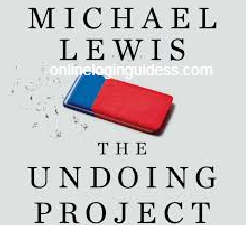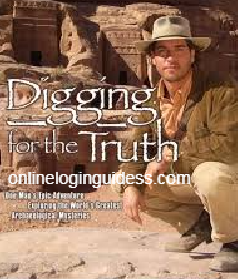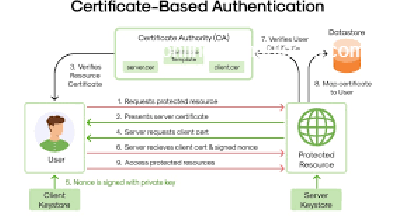Oneworldcolumn.org Blog: Your Gateway to Hidden Truths and Powerful Narratives
Imagine starting a blog that encapsulates the hidden truths of our world while also telling powerful narratives that resonate

Imagine starting a blog that encapsulates the hidden truths of our world while also telling powerful narratives that resonate deeply with your audience. This is precisely the vision behind Oneworldcolumn.org. In this post, we’ll explore innovative strategies for crafting engaging, SEO-optimized content that not only ranks well on search engines but also captivates readers from beginning to end. Join us as we delve into the art and science of effective blogging!
Understanding Your Audience: The First Step into SEO
When it comes to creating content that truly resonates, it’s vital to understand your audience. But what does this entail? It’s more than just surface-level knowledge. You need to dive deeper. Let’s explore how you can do this effectively.
Identify What Your Audience is Curious About
Start by asking yourself: What keeps your audience up at night? What are their pressing questions? By identifying these curiosities, you can shape your content accordingly. A survey or a simple poll on your social media platforms can yield amazing insights. Think about it like a treasure hunt. The questions your audience asks are the clues. Follow them!
Research Latent Questions and Interests
Using tools like Google Trends or even social media analytics can uncover interests you might not be aware of. You might find that your audience has niche queries that haven’t been addressed yet. This is a goldmine! Addressing these interests makes your content not only unique but significantly more appealing. It’s like fishing in a pond full of hidden gems.
Use Audience Insights to Shape Your Content Strategy
Once you’ve gathered this information, the real work begins. Incorporate these insights into your content strategy. This may involve adjusting your tone, style, or even the types of topics you cover. Remember, the end goal is to speak directly to your audience’s needs and wants.
Engagement is key. By crafting content that serves your audience based on their interests, you create a community that trusts you. And according to Neil Patel,
“The truth of the matter is, the more you know your audience, the better your content will be.”
Importance of Audience Understanding
- 75% of content requires user understanding before creation.
- 58% of marketers cite audience research as a priority.
Visualizing the data can also help underline this point. Below is a chart illustrating the importance of understanding your audience in content creation:
| Data Point | Percentage |
| Content requiring user understanding | 75% |
| Marketers prioritizing audience research | 58% |
Utilizing these insights isn’t just beneficial; it’s essential in crafting content that strikes a chord with your audience. Engage, listen, and understand—this is the path to impactful content creation.
Keyword Research: The Goldmine for Visibility

Understanding Keywords
Keywords are the foundation of effective SEO. But what exactly are they? In simple terms, keywords are words or phrases that people enter into search engines. They can be categorized into primary and secondary keywords. Your primary keywords are the main focus of your content, while secondary keywords are related terms that support your main topic.
To identify the right keywords for your content, ask yourself: What would my audience search for? What questions do they have? This kind of thinking will help pinpoint both primary and secondary keywords that are relevant to your topic.
Tools for Analysis
Using the right tools can enhance your keyword research. Tools like SEMrush and Ahrefs provide valuable insights into keyword performance. They allow you to see how competitive a keyword is and how often it is searched. This information is crucial in choosing the right keywords. It’s like having a map that guides you toward your destination in the vast ocean of the internet.
Keyword Density
Aiming for a balanced keyword density of 1-2% is vital. Keyword density refers to how often a keyword appears in your content compared to the total number of words. Why is this important? If you use keywords too much, you risk being penalized by search engines. Conversely, if you use them too little, you might not rank at all. It’s a delicate balance.
Impact of Keywords on SEO
An effective keyword strategy can significantly impact your SEO rankings. For instance, top-performing posts often showcase a density of 1-2% for primary keywords. Long-tail keywords can also attract more niche audiences. Think about specific phrases, like “best Italian restaurants in Brooklyn” instead of just “restaurants.” They may have less competition and more targeted traffic.
| Keyword Density | Effectiveness |
| 1-2% | Promotes better SEO ranking |
“Keyword research is not an end; it’s a means to an end.” – Rand Fishkin
Incorporating well-researched keywords seamlessly enhances your article’s potential reach. So, get ready to dive into your keyword research, and discover the treasures waiting for you in the SEO world.
Crafting Engaging Narratives: Real-Life Examples

Writing captivating narratives is essential for any content creator. You want readers to connect with your words. How can you create that connection? Here are some effective tactics.
1. Incorporate Relatable Personal Stories
- Sharing personal experiences can amplify your message.
- Your unique journey may resonate with readers.
- People love stories that mirror their own lives.
Think about it: Have you ever read a story that made you feel understood? That’s the power of a relatable narrative. When you share your ups and downs, readers see themselves in your experiences. For instance, imagine a nurse named Maria sharing how she navigated the emotional toll of her job during a pandemic. Readers in similar professions will likely empathize.
2. Use Diverse Examples to Illustrate Concepts
Using varied examples can help clarify your points.
- Examples bridge the gap between theory and practice.
- They make your argument tangible.
Take the concept of resilience. You could mention athletes like Serena Williams overcoming injuries. Or reference a small business owner who pivoted during tough economic times. This variety not only engages different demographics but demonstrates the universality of your message.
3. Create Emotional Connections Through Storytelling
Storytelling isn’t just about sharing facts; it’s about evoking feelings.
- Stories can trigger laughter, sadness, or inspiration.
- They can draw readers into deeper reflection.
As Robert McKee wisely said,
“Stories are the most powerful way to put ideas into the world today.”
Think about your friends’ stories. Do you remember the emotions behind them more than the facts? Your goal is to inspire that same connection with your readers.
High-quality narratives draw readers deeper into your content. When you craft your stories well, you increase engagement and retention. Relatable scenarios will resonate more with readers and give them a reason to come back for more.
In sum, this is the key to engaging storytelling: using personal anecdotes, diverse examples, and emotional connections. These strategies will transform your writing and create lasting impact on your audience.
Formats and Styles: Keeping it Reader-Friendly

When it comes to writing online, formats and styles matter. You may have incredible ideas, but if your layout is cluttered, no one will stick around to read them. Here are some key aspects to maintain readability and clear structures in your writing.
1. Maintain Readability
Readability is crucial. If your content is hard to read, it won’t be read at all. So, be concise. Use short sentences. This can keep your readers engaged. You don’t want to lose them with overly complex sentences. Think about it: would you prefer reading something that flows easily or something that requires a dictionary every few words?
2. Use Subheadings and Short Paragraphs
Break your content into sections. Subheadings guide your readers through the text. Use them generously. Aim for short paragraphs, too. One idea per paragraph could be your motto. For example:
- Subheading: Introduction
- Subheading: Main Ideas
- Subheading: Conclusion
Even a single-sentence paragraph can have impact. It creates white space. White space is your friend in blog formatting.
3. Style Variations
Status quo is not your ally. Be creative. Mix bold, italic, and regular text to create visual interest. Use emphasis sparingly for important points. Vary font sizes and colors as necessary, but avoid overwhelming your reader. Remember, a clean layout enhances reader experience. Would you enjoy reading a crowded room filled with distractions?
4. Optimize for Featured Snippets
Featured snippets can boost your visibility. To optimize for them, be direct and concise. Use clear headings. Structure your content so it answers common query formats. For example:
“Good design is as little design as possible.” – Dieter Rams
This quote encapsulates the essence of effective writing. Avoid clutter; focus on essential content.
Finally, remember that formatting can drastically improve user experience. If your readers can find information quickly, they will likely continue reading. You’ll gain their trust, and that’s invaluable.
The Final Checks: SEO and Readability Balance

When you get to the final checks of your blog post, it’s time to fine-tune that content. Think of it as polishing a gemstone. After you’ve put in the effort, those last few revisions can truly make or break your article’s effectiveness.
1. Revise for SEO Elements
Start with the basics. Are you using effective titles and meta-descriptions? Your title should grab attention while also including your primary keyword. Just imagine if your title is “Amazing Benefits of Yoga” when it could be “Discover the Amazing Benefits of Yoga for Mental Well-being.” A slight change can make a world of difference!
Next up, check your meta-description. It should summarize your content. But don’t just copy and paste; make it inviting! Sometimes, a few tweaks can help improve your click-through rate exponentially. It’s not just about being found; it’s about enticing readers to choose your content over others.
2. Ensure Natural Flow of Language
While optimizing for SEO, remember: you’re writing for humans. It’s essential to maintain a natural flow of language amidst all that optimization. Read your post aloud. Does it sound awkward or forced in any spot? If so, adjust those phrases. Use transitions that guide the reader as they navigate through your content. It’s like connecting dots—smooth and effortless.
3. Balance Technical SEO with Engaging Content
Now, here’s where many writers trip up. Technical SEO is crucial, but it should complement compelling storytelling, not overwhelm it. If your article reads like a robot wrote it, you’re missing the point. Implement engaging elements, like anecdotes or examples, to keep the reader hooked. Why not ask them questions like, “Have you ever wondered how yoga impacts your mood?” These rhetorical hooks draw readers in.
“Content is king, but marketing is queen, and runs the household.” – Gary Vaynerchuk
As you push for high rankings on search engines, don’t lose sight of your audience. Frequent SEO updates and algorithm changes mean you should regularly revisit your content. Much like a gardener tends to their plants, nurture your articles with fresh updates to keep them thriving.
In the end, the key is to strike a balance. By placing equal emphasis on SEO and readability, you ensure your content is not just discoverable but also enjoyable to read.
Post-Publication Strategies: Engaging Your Readers

Once you hit the ‘publish’ button, the journey isn’t over. In fact, it’s just beginning. Post-publication engagement is crucial for building a loyal readership. Here are some strategies you can implement immediately.
1. Use Social Media for Content Promotion
Social media platforms are your best friends when it comes to promoting your content. Why? Because they let you tap into broader audiences. They allow you to share your blog posts on platforms like Twitter, Facebook, and Instagram. By doing this, not only do you drive traffic, but you also create opportunities for discussion.
- Share snippets: Post engaging excerpts or quotes from your blog.
- Visuals matter: Use eye-catching images or videos to draw attention.
- Engage directly: Respond to comments to foster a community feeling.
2. Engage with Readers Through Comments and Forums
There’s power in interaction. Engaging with your audience in the comments section or on forums can deepen their connection to you. About 50% of readers appreciate timely responses to comments. Have you ever received a personalized reply? It transforms a typical reading into a memorable interaction.
- Be prompt: Answer comments quickly to show you value their input.
- Ask questions: Encourage further discussion by inquiring about their thoughts.
3. Monitor Web Analytics for Performance Tracking
In the digital world, data is key. Use analytics tools to monitor how your content performs. What do your readers enjoy most? Which posts draw the most traffic? Tracking web analytics enables you to tailor your future content more effectively.
- Identify patterns: See which topics resonate with your audience.
- Adjust strategy: Adapt your promotional tactics based on what the data shows.
Engagement is an Ongoing Process
Remember, engagement doesn’t stop with publication. It’s essential to schedule regular interactions with your audience. Whether it’s hosting a Twitter chat or launching a poll on social media, keep the conversation alive!
“Your brand isn’t what you say it is; it’s what they say it is.” – Marty Neumeier
Post-publication engagement fosters community and loyalty around your content. It creates a space where readers feel valued and heard, leading to a more profound connection with your brand. It’s time to rethink your engagement strategy and make it as vibrant as your content. After all, your readers are looking for more than just words; they’re seeking connection and interaction.
Conclusion: Your Journey Begins with Authenticity

Your journey as a content creator will thrive on authenticity; embrace it! Authentic content is the lifeblood of a successful blog. In a world flooded with information, originality shines. It’s vital to pour your unique voice into your writing. When you write from your heart, readers can sense it. They connect with you. They trust you. Isn’t that what we all want?
Consider this: how often have you felt drawn to a blog simply because of its honest tone? Authenticity creates a bridge between you and your readers. It turns casual visitors into loyal followers. Each post becomes a conversation, a sharing of ideas and experiences that feels intimate. This personal touch is what keeps your audience engaged. It’s *not* just about facts and figures; it’s about stories and insights.
Embrace Continuous Learning
As you continue your blogging adventure, remember the importance of continual learning and adjustment. Just as trends evolve, so should you. Are you keeping up with changes in your niche? Are you adjusting your approach based on feedback? Staying curious and adaptable is crucial. It allows you to grow, not just as a writer, but as a person.
You might ask yourself, “How can I keep learning?” Start by reading widely. Follow other bloggers, attend webinars, or even take online courses. Every bit of knowledge enriches your craft. It helps you connect with your audience on a deeper level. You become a trusted source of information and insight.
Trust the Process
Lastly, *trust the process* of blogging. Your voice matters. While it’s tempting to mimic successful bloggers, remember that your unique perspective is what sets you apart. You are building a brand based on your experiences and thoughts. Your honesty and creativity will lead to genuine connections.
“The best way to predict the future is to create it.” – Peter Drucker
In conclusion, commit to authenticity in your content. Let your passion shine through. Continue to learn. Adjust your strategy as needed. Emphasize the personal touch in all your writing. Remember, your journey is just beginning. Embrace it fully; it’s a thrilling ride ahead!












